-
Notifications
You must be signed in to change notification settings - Fork 131
New issue
Have a question about this project? Sign up for a free GitHub account to open an issue and contact its maintainers and the community.
By clicking “Sign up for GitHub”, you agree to our terms of service and privacy statement. We’ll occasionally send you account related emails.
Already on GitHub? Sign in to your account
Feature: add character/word/line index attributes to the text geometry #102
Comments
|
Also maybe: |
|
word and line would be enable per line and per word animation, much like https://greensock.com/splittext/ (which we can consider a good example of what this change would enable) Am I right assuming this would also allow per-token (char, word, line) changes in the fragment shader? |
You'd have to pass it from vertex to fragment as a varying, but yes. :) |
|
Down the rabbit hole we go... I can think of uses for all the following indices, plus a total count for each one:
We'd want to make all of these opt-in and do some smart packing to minimize the number of new glsl attributes we're introducing. I'll have to think more about the API for this. |
|
we could let users pick ALL of them with flags, so {
Mind expanding on this? I'm curious 👐 |
|
I like that idea of letting users choose the split(s). By packing I just mean we don't want to add 12 new |
|
Oh yeah, makes a lot of sense, thank you! |
|
Should the |
|
Counting whitespaces would create weird staggers when animating by index, so I'd also lean toward visible |
|
Amazing! Let me know when you have a test version ready 😄 |
|
I was looking for doing a feature that this could address. I have a bunch of 3 letter labels to put around a sphere. I am making them always face the viewer and make adjustments so that on the screen they are always the same size, no matter the scaling applied in the view matrix or modeling matrix. The other option I was considering would be instanced rendering, since all my labels all have 3 letters. But that would require WebGL 2 for sure and might be too complex to be worth it, at least at the start. |
|
@FunMiles I think you're right, this may facilitate that sort of thing. If I'm understanding it correctly, optimization could involve two parts:
For 1, take a look at this comment, that may actually be sufficient for your needs already. That's also a good demonstration of how to apply a custom shader, basically just assigning it as the For 2, I think you're right you could render a single Text and then use some attribute to displace individual characters around your sphere. The new char/word index attributes described in this issue may be of some help, but I'm not sure they're even necessary. You could probably just encode those displacements into a new InstancedBufferAttribute, where each of its vectors holds the displacement for one character (the Text's geometry is a simple quad that is instanced for each glyph, so additional InstancedBufferAttributes will be stepped through for each glyph.) I'm interested to see if you have any luck doing this! |
|
@lojjic You understood correctly. And the code you linked does 90% of what I need for (1). Your demo eerily matches my use case.
The changes for me to this code for just doing (1) would be mostly in the scaling and a slight coordinate shift so that the text stays outside of the sphere I have. You did understand 2 as well. However I am a bit confused when reading the code. I had not realized that the text rendering is already instance rendering. What confuses me is that you do have |
|
I've had to step away from this for a bit, but here's a quick status update: The PR #109 feels pretty solid in terms of collecting and exposing the various counts. I want to make them opt-in but otherwise I'm happy with where it's at. However, I have a strong hunch that shader-based animations are going to require not only these new counts, but also maybe access to some other data like:
Some of these are already technically present in the shader, but if users are going to depend on them then they'll need to be exposed with friendly names and documented as a reliable contract. If anyone has time to play with that PR branch and try implementing some shader animations, and let me know what pieces of info are missing, that would be a big help. |
|
@lojjic Just want to express my interest in this feature 😺 |
|
I resolved some merge conflicts with latest master here: https://github.com/canadaduane/troika/tree/char-indices I haven't had a chance to test it yet, but intend to in the next few days. |
|
I've been away from this discussion for a long while. However I was just reminded that I want to get back to looking at it. I think that, as @lojjic mentioned, I would need some bounds on the words. Or at least, for my use, the center of each word. |
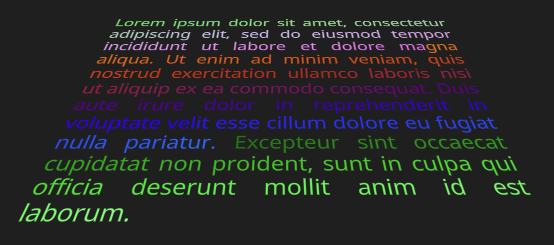
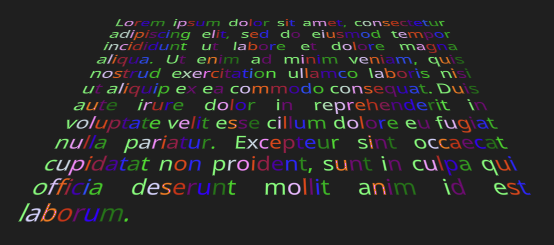
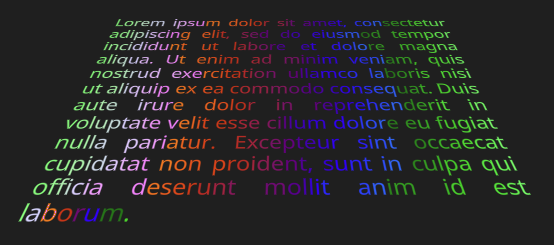
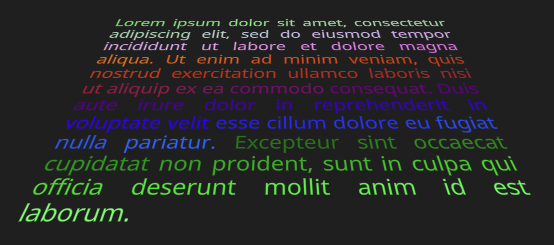
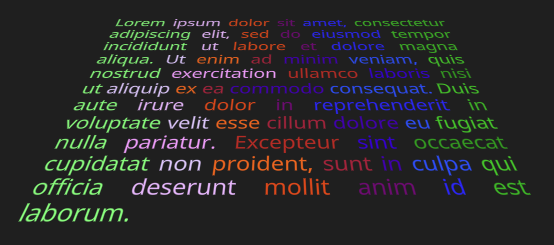
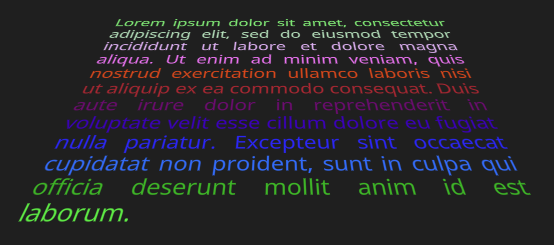
Custom shaders applied to Text instances could enable some really nice animation effects. For many of these, you'd want to treat each character/glyph independently, and for that you need something in the shader telling you which character is currently being rendered.
Theoretically
gl_InstanceIDcould be used for this, since we use instancing for the glyph quads. And this kinda-sorta works: https://codesandbox.io/s/zealous-water-m8lzq?file=/src/index.js -- butgl_InstanceIDis only available in WebGL2, and it appears to be broken in ANGLE implementations when used within functions other thanvoid main. So it's not realistically usable for this right now.Instead, we could add our own instance attribute, something like
attribute float charIndex;, which just holds an incrementing character index. Custom shaders could then make use of that.I'd probably want to make it an opt-in feature, something like
textmesh.includeCharIndexInShader = true, just to avoid creating that extra attribute array if it isn't needed.The text was updated successfully, but these errors were encountered: